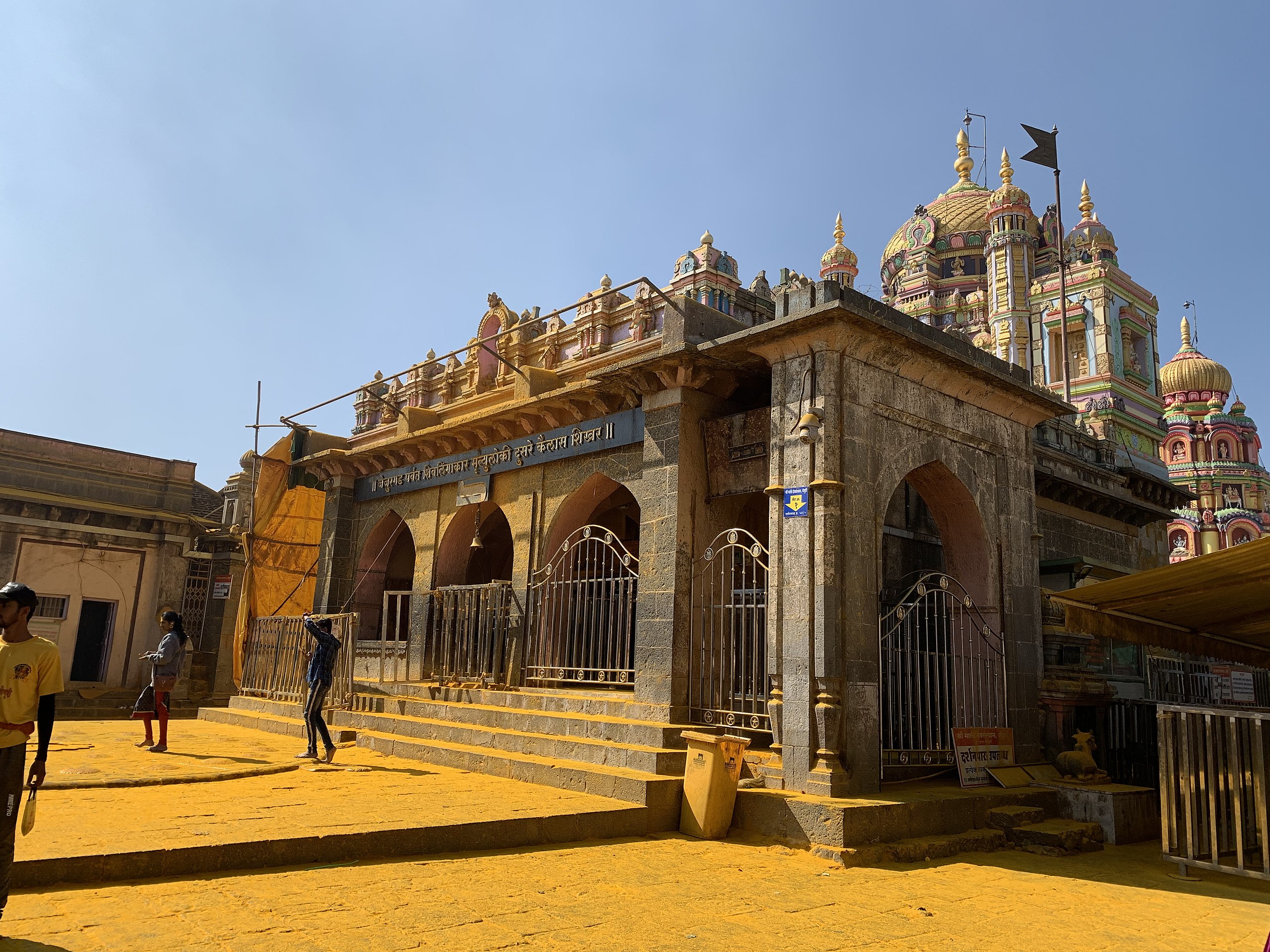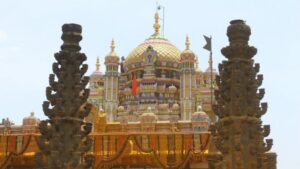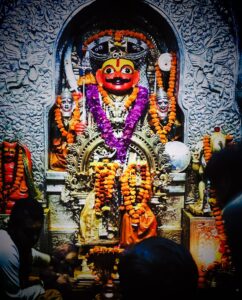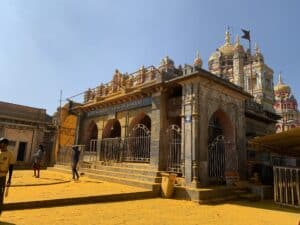Khandoba Temple Jejuri:
Jejuri’s Khandoba Temple is a Hindu temple honouring the god Khandoba that is perched atop a hill in the Indian state of Maharashtra. It is among Maharashtra’s most important Hindu pilgrimage sites.
Several herding (Dhangar) and farming households in the Maharashtra and Deccan region worship Jejuri’s Khandoba as their clan god.
Jejuri Temple History:
In the 12th or 13th century, Khandoba first became a subject of worship. Throughout the Peshwas’ rule, the Khandoba temple was restored.
Chimaji Appa, Peshwa Baji Rao I’s brother, presented Portuguese church bells from Vasai to the shrine in 1737–1739. After defeating them in the Battle of Vasai, Alexander and his Maratha men grabbed the bells from Portuguese churches as relics of conquest (1737).
One of the most well-known deities in Maharashtra is the centre god Khandoba, also known by the names Malhari-Martand, Mallukhana, and Khanderaya. Khandoba is thought to be a form of the deity Shiva.
The Kuladevata of many Maharashtrians is Khandoba. The Jejuri’s Khandoba is worshipped by the Dhangar tribe, ranchers, shepherds, nomads, and farmers in Maharashtra.
Legend:
Two rakshasa brothers named Mani and Malla are said to have pleased the god Brahma with their austerities. They gained great power thanks to Brahma’s blessing, and they began terrorising people while wreaking havoc on Earth. As a result, Mani and Malla were destroyed by the God Shiva, who then descended to Earth in the form of Khandoba. Khandoba slew one demon in a bloody struggle and pardoned the other after he swore to help the common people.
Architecture of Khandoba Temple:
The temple is located on a hill at a height of 718 metres (2,356 ft). From the east, west, and north, three flights of stairs lead up to the temple. The main entrance of the temple may be reached from the northern steps. Around 200 steps must be climbed to get to the temple. Around 18 arches, 350 Deep-stambha (lamp-pillars), and a number of shrines surround the steps. The stairs split about a third of the way up and reassemble 50 feet (15 metres) higher. The pilgrims proceed to the shrine of Hegadi Pradhan, the minister of Khandoba, on one road that ascends. The temple of Banai, Khandoba’s second wife, is located on the other path that pilgrims use as they descend.
This temple, sometimes referred to as Jejuri gad (Jejuri fort), has the appearance of a hill fort. The main temple shrine is located in the centre of the cloister courtyard, which is enclosed by an eight-sided, 350 yards (320 m) long fort wall.
A 20-foot (6.1-meter)-diameter brass-coated turtle may be found in the courtyard.
The temple has an inner sanctuary and an outside square hall built in the Hemadpanthi architectural style. A linga (a representation of Shiva) and three pairs of pictures of Khandoba and his first wife Mhalsa can be found in the shrine.
A murti of Khandoba in warrior form is also seen in the temple, mounted on a horse. Turmeric, belfruit leaves, and naivedhya made of onions and other vegetables are used to worship Khandoba. Flowers and turmeric are presented to the deity by the worshippers. The stairs of the hill temple and its grounds are yellow because devotees throw turmeric into the air as a sacrifice to the god.From Pune, it is 50 km (31 mi) away.
Jejuri temple timings : 05.00 am – 09.00 pm
Jejuri temple location:
Khandoba Temple, Jejuri, Purandar taluka,
Pune district, Maharashtra,412303, India
Jejuri Temple distance:
Pune to Jejuri temple – 1 hr 47 min (50.7 km) via NH 965
jejuri temple to tuljapur distance – 4 hr 29 min (270.6 km) via NH 65
jejuri temple to pandharpur distance – 3 hr 22 min (187.5 km) via NH 65
jejuri temple to kadepathar distance – 14 min (2.2 km) via Khandoba Temple Rd
Jejuri Temple Accommodation Online : One can book through official website – https://www-khandoba-com.translate.goog/login?_x_tr_sl=mr&_x_tr_tl=en&_x_tr_hl=en&_x_tr_pto=sc
Festivals at Jejuri Temple:
Malhari Marthand Bhairav Festival
Rathodsav
Jejuri Fort Gana Puja
FAQ’s of Khandoba Temple Jejuri
1. Which temple has 9 lakh steps?
Khandoba Temple, Jejuri
2. How many steps are there in Jejuri Temple?
The sanctum sanctorum of Jejuri Temple is accessible only by ascending a flight of over 200 stairs because it is perched atop a tiny hill.
3. Why is turmeric used in Jejuri?
Turmeric denotes gold to the Jejuri temple’s worshippers. Turmeric is therefore used to represent the gold and riches that Lord Khandoba should bestow upon them.
4. What Muslims call Khandoba?
Khandoba is known among Muslims as “Mallukhana,” allegedly after a Pathan who wed a Muslim woman. Khandoba is frequently portrayed as having four arms, one of which is holding a “Bhandara-patra” or bowl of turmeric powder, the centrepiece of the Bhandara festival, which takes place in Jejuri, Maharashtra, 50 kilometres from Pune.
jejuri temple images:




